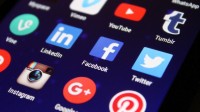Study Reveals Power, Reach of Paid Influence Campaigns
December 10, 2019
The NATO (North Atlantic Treaty Organization) Strategic Communications Centre of Excellence, an independent group that advises the organization, conducted a test to see how well big tech companies such as Facebook and Twitter are doing in filtering out paid influence campaigns that use automated bots and other means to manipulate social media. It did so by hiring 11 Russian and five European companies in the business of selling fake social media engagement and found that a small amount of money could cause a lot of damage.
The New York Times reports that “for 300 euros, or about $330, the researchers bought over 3,500 comments, 25,000 likes, 20,000 views and 5,000 followers, including on posts from prominent politicians.” The study, which took place from May to August, further reported that “after four weeks, about 80 percent of the fake clicks remained … and virtually all of the accounts that had been used to generate the clicks remained active three weeks after researchers reported them to the companies.”

The report also “brings renewed attention to an often overlooked vulnerability for Internet platforms: companies [most of them in Russia] that sell clicks, likes and comments on social media networks.” Paid activity increases engagement and can “lead to more prominent positions.”
Sebastian Bay, one of the researchers on the report, noted that “we need to consider if this is something which should be allowed but, perhaps more, to be very aware that this is so widely available.” The researchers chose 16 social media manipulation companies, out of hundreds, noting that, “the openness of this industry is striking” and that many of them “advertise openly on major platforms.”
Researchers bought “engagements on about a hundred posts on Facebook, Instagram, Twitter and YouTube” with “little to no resistance” and then were able to identify “nearly 20,000 accounts that were used to manipulate the social media platforms.”
After the researchers reported a few of the accounts to the impacted Internet companies, “three weeks later, more than 95 percent of the reported accounts were still active online.” Even verified accounts were not better protected.
Twitter did the best, with half the likes/retweets bought on that platform eventually removed. YouTube tested the worst “at removing inauthentic accounts” … and “was the only one that did not suspend any [accounts] and provided no explanation.” Facebook excelled at “blocking the creation of accounts under false pretenses, but it rarely took content down … [and] Instagram, which Facebook owns, was the easiest and cheapest to manipulate.”
“Fake engagement — whether generated by automated or real accounts — can skew the perceived popularity of a candidate or issue,” said Oxford Internet Institute researcher Samantha Bradshaw, referring to this year’s European elections and the 2020 U.S. presidential election.
“If these strategies are used to amplify disinformation, conspiracy and intolerance, social media could exacerbate the polarization and distrust that exist within society.”

No Comments Yet
You can be the first to comment!
Sorry, comments for this entry are closed at this time.